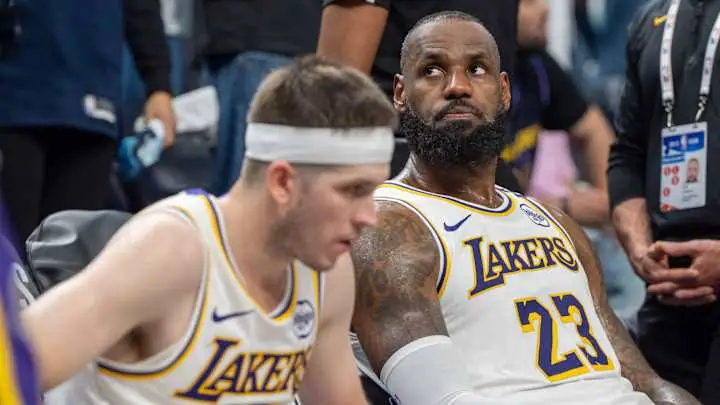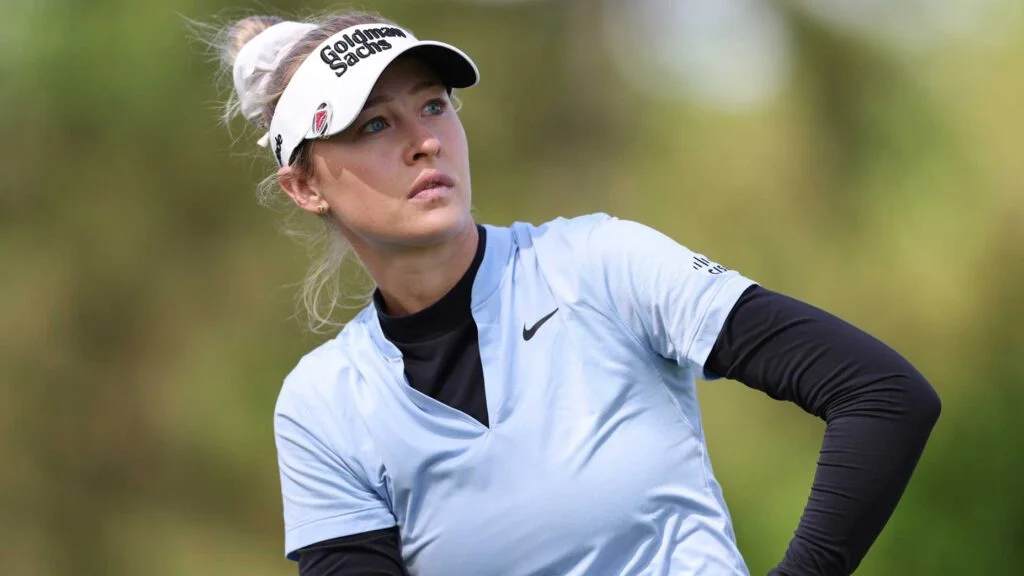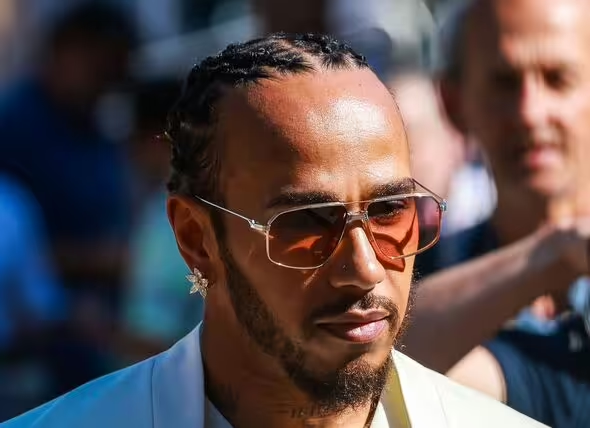Breaking: Lakers’ Trade Analysis. Evaluating Finney-Smith, LaRavia, Hayes, and Ayton’s Impact…👇👇
The Los Angeles Lakers’ recent roster moves have sparked considerable debate among fans and analysts alike, particularly with the acquisitions of Dorian Finney-Smith, Jake LaRavia, Jaxson Hayes, and DeAndre Ayton. While these players bring a mix of defensive tenacity, athletic upside, and interior presence, questions remain about whether they can elevate the Lakers beyond their recurring first-round playoff exits. This 1,000-word analysis breaks down each player’s contributions, their fit alongside stars LeBron James and Luka Doncic, and the broader implications for the team’s championship aspirations in the 2025-26 season.
—
### **Dorian Finney-Smith: The Defensive Anchor**
Dorian Finney-Smith, acquired as a versatile forward, isn’t known for lighting up the scoreboard. His career scoring average hovers around 7.9 points per game, but his value lies elsewhere. Shooting 39.8 percent from beyond the arc last season, Finney-Smith offers enough offensive spacing to complement the Lakers’ star-driven system. His ability to knock down open threes ensures that defenses can’t entirely collapse on James and Doncic, preserving driving lanes and playmaking opportunities.
However, Finney-Smith’s true impact is on the defensive end. A rangy 6’7” forward with a 7’0” wingspan, he’s capable of guarding multiple positions, from shifty guards to burly forwards. This versatility is critical for a Lakers team that has often leaned on James and Doncic to carry the offensive load, leaving them exposed defensively. Neither James, now in his age-41 season, nor Doncic, who struggles with lateral quickness, is an elite defender. Finney-Smith’s ability to take on tough assignments—whether it’s clamping down on a wing like Jayson Tatum or battling a big like Nikola Jokić in spurts—reduces the defensive burden on the Lakers’ stars.
Finney-Smith’s hustle stats further underscore his value. Last season, he averaged 1.2 steals and 0.7 blocks per game, often disrupting passing lanes and contesting shots without fouling. His defensive IQ and relentless effort make him a perfect glue guy for a team aiming to compete in the Western Conference’s gauntlet. However, his limited scoring output means the Lakers will need more offensive firepower from their other acquisitions to avoid another early playoff exit.
—
### **Jake LaRavia: The High-Upside Swing**
Jake LaRavia, signed to a two-year, $12 million deal, represents a low-risk, high-reward addition for the Lakers. The 24-year-old forward, drafted 19th overall in 2022, has yet to fully break out but shows flashes of becoming a reliable two-way player. Standing at 6’8” with a smooth shooting stroke, LaRavia averaged 10.8 points and 3.7 rebounds in limited minutes last season, shooting 34.0 percent from three. While his numbers don’t scream “game-changer,” his potential to develop into a versatile contributor makes him an intriguing piece.
LaRavia’s offensive game is still raw, but his ability to stretch the floor and attack closeouts fits well in a system centered around James and Doncic’s playmaking. His 6’8” frame allows him to switch defensively, though he’s not yet at Finney-Smith’s level as a stopper. LaRavia’s youth and athleticism could complement the Lakers’ veteran core, providing energy off the bench and occasional spot starts when injuries inevitably arise.
The concern with LaRavia is consistency. His shooting percentages have fluctuated, and he’s yet to prove he can handle significant minutes against playoff-caliber competition. At $6 million per year, he’s a cost-effective gamble, but Lakers fans hoping for immediate impact may be disappointed if his development stalls. For the Lakers to maximize LaRavia’s potential, coach JJ Redick will need to carve out a defined role, likely as a sixth or seventh man who provides spacing and hustle.
—
### **Jaxson Hayes: The Budget Big**
Jaxson Hayes, inked to a one-year, $3.4 million deal, is another low-cost addition with upside. The 6’11” center brings athleticism and rim-running ability, averaging 7.4 points and 4.0 rebounds last season while shooting 72.0 percent from the field, mostly on dunks and putbacks. His role with the Lakers will likely mirror his time in New Orleans: a high-energy big who thrives in pick-and-rolls and protects the rim.
Hayes’ fit alongside James and Doncic is straightforward. Both stars excel at creating lob opportunities, and Hayes’ explosive leaping ability makes him a prime target for alley-oops. Defensively, he’s a capable shot-blocker (1.2 blocks per game last season), though his slender frame can be a liability against bulkier centers like Jokić or Joel Embiid. Pairing Hayes with Finney-Smith in certain lineups could create a switchable, athletic frontcourt that compensates for Doncic’s defensive shortcomings.
However, Hayes’ limitations are glaring. He lacks the playmaking or shooting range to stretch the floor, and his rebounding numbers are underwhelming for a center. At 25, he’s still young enough to improve, but his one-year deal suggests the Lakers view him as a stopgap rather than a long-term solution. If Hayes can’t elevate his game beyond a highlight-reel dunker, the Lakers will need more from their other bigs to avoid being outmuscled in the paint come playoff time.
—
### **DeAndre Ayton: The X-Factor**
The most significant acquisition, both in terms of cost (two years, $16.21 million) and expectations, is DeAndre Ayton. The former No. 1 overall pick has been a polarizing figure, oscillating between dominant double-doubles and frustratingly inconsistent performances. Last season, Ayton averaged 16.7 points and 11.1 rebounds on 57.0 percent shooting, showcasing his ability to control the paint when engaged.
Ayton’s offensive skill set—soft touch around the rim, mid-range shooting, and occasional post moves—adds a dimension the Lakers have lacked since Anthony Davis’ prime. His ability to score in isolation could alleviate some of the offensive pressure on James and Doncic, especially in crunch-time situations. Additionally, Ayton’s 7’1” frame and rebounding prowess should bolster the Lakers’ interior defense, an area where they’ve struggled against teams like Denver and Minnesota.
Yet, Ayton’s fit raises questions. His defensive effort has been inconsistent, and he’s not the rim protector Hayes can be in spurts. Offensively, he demands touches, which could disrupt the flow of an offense built around James and Doncic’s ball-dominant styles. At $8.1 million per year, Ayton is a bargain for a starting-caliber center, but his history of underperforming in big moments (notably in Phoenix’s playoff runs) is a red flag. For the Lakers to succeed, Ayton must embrace a role that balances his offensive contributions with defensive reliability.
—
### **Can This Roster Avoid Another First-Round Exit?**
The Lakers’ new additions form a roster with clear strengths and glaring weaknesses. Finney-Smith’s defensive versatility and spot-up shooting make him an ideal complement to James and Doncic, alleviating their defensive responsibilities. LaRavia and Hayes, while unproven, bring youth and athleticism, offering depth and upside on cost-effective deals. Ayton, the group’s centerpiece, has the potential to be a game-changer but carries the risk of inconsistency.
The Western Conference remains a brutal landscape, with teams like Denver, Oklahoma City, and Phoenix boasting deeper, more cohesive rosters. The Lakers’ success hinges on several factors: Finney-Smith maintaining his defensive tenacity, LaRavia taking a developmental leap, Hayes providing consistent energy, and Ayton delivering as a reliable third option. If any of these pieces falter, the Lakers risk another early playoff exit, especially if James shows further signs of age-related decline or Doncic struggles to carry the offensive load.
Coaching will also play a pivotal role. JJ Redick’s ability to integrate these disparate skill sets into a cohesive system—maximizing Finney-Smith’s defense, LaRavia’s potential, Hayes’ athleticism, and Ayton’s interior presence—will determine whether the Lakers can compete with the West’s elite. Offensively, the team needs to balance Doncic’s heliocentric style with Ayton’s post touches and James’ playmaking while ensuring Finney-Smith and LaRavia get open looks from three.
—
### **Final Verdict**
The Lakers’ acquisitions reflect a calculated effort to blend defense, youth, and interior scoring around their star duo. Finney-Smith is a proven commodity who shores up the team’s defensive weaknesses, while LaRavia and Hayes offer upside at a low cost. Ayton, the wildcard, could elevate the Lakers to contender status if he rediscovers his All-Star form. However, the margin for error is slim. Without significant contributions from all four players, the Lakers risk another first-round flameout, leaving fans to wonder if this roster overhaul was enough to keep pace in a loaded Western Conference.



